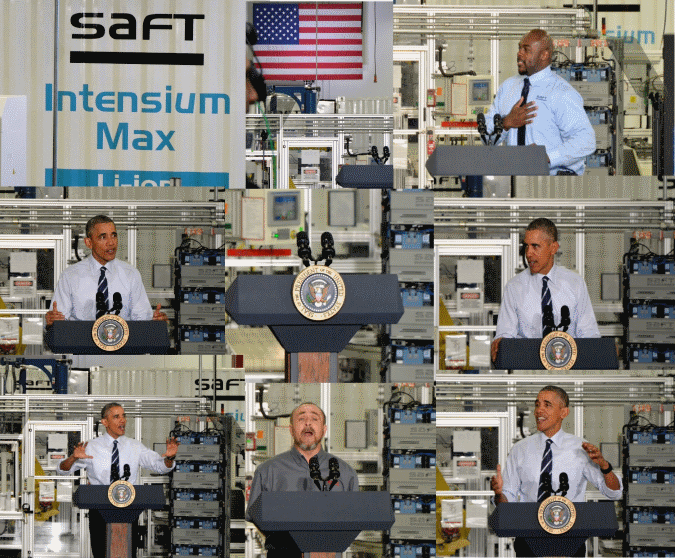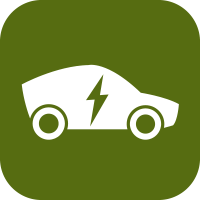Having the President over for lunch is a big deal and takes weeks of preparation and involves hundreds of security and media personnel, plus a slow-down of operations at the company. This was how it all started when I attended a thank-you event to/from Saft America to/from the US government, spearheaded by President Barack Obama, on February 26th . The President said “I want to thank everybody at Saft America for hosting us today, especially Tom Alcide and Chris Kaniut. We’re here to talk about the great things you guys are doing at this facility. But before I begin, I do want to say a few words about yet another mass shooting that we’ve had to endure.”

President Obama visited Saft America in Jacksonville, FL as a testament to how well the Recovery Act worked.
The President commented on Kansas, and also the recent shooting in Michigan. “These acts may not dominate the news today but these are two more communities in America torn apart by grief. I thought it was important for me to say something today because otherwise these sorts of shootings become routine. We cannot become numb to this.”
And then Mr. Obama moved on to recognize Saft and its accomplishments. He said that a decade ago this site had been swamp land. The Recovery Act of 2009 provided $95.5 million to Saft America, a subsidiary of the French firm Saft, to build a state-of-the-art lithium ion battery facility. He said that the stimulus was key to reviving the flagging economy, and added that businesses like Saft are leading a clean energy revolution that’s creating jobs and making our planet safer and more secure at the same time.
Continuing, the President said, “And overall, the clean energy investments we made in the Recovery Act have combined to support hundreds of thousands of jobs — including nearly 300 right here at Saft. This was an example of the fruits of those investments that we made — jobs that America needs done, getting done right here in Florida. He added that America now has more than two dozen factories manufacturing batteries and components for electric cars. And these batteries are nearly 70 percent cheaper and 60 percent more powerful than just five years ago. The advanced batteries are for cars and also to help stabilize our energy grid, which is allowing us to transition faster to renewable energy.
According to Chris Kaniut GM of Saft America, the company started full-scale production in 2012 and has grown significantly since. The company makes large batteries for solar and wind farms, and utility grids. These batteries allow companies and localities to improve their electric grid. The battery allows you to modulate the power or store it and get energy later when you need it. It allows the renewable technologies to become more viable. For example, solar power is affected by clouds and causes the electricity to fluctuate. Saft also makes batteries for telcom networks to help keep them working.
These Li-ion batteries are long-life rechargeable Li-ion batteries. They can last 15 to 20 years. That is very different from the consumer version of rechargeable Li-ion batteries that only last 5-7 years. The batteries are made in a precise, dry, and clean environment, which allows the company to build a battery that lasts an unusually long time.
Advanced energy storage for automotive applications

A report from Navigant Research says that global automotive manufacturers continue their efforts to produce more vehicles using electric drivetrains. Most OEMs have introduced battery electric vehicle (BEV) and plug-in hybrid electric vehicle (PHEV) models, almost all of which use lithium ion (Li-ion) batteries for onboard energy storage. Increasingly, hybrid electric vehicles (HEVs) are beginning to use Li-ion batteries instead of nickel-metal hydride (NiMH), and now stop-start vehicles (SSVs) using Li-ion batteries are entering the market. When designing electric or electrically assisted powertrains, OEMs continue to tailor their design approach to each model, factoring in not only economy, but also vehicle range, driver experience, and performance.
The immediate future looks to be secure for the Li-ion chemistry, and the move now is to continue to reduce costs while increasing energy density and vehicle range. These factors will lead to a greater percentage of BEVs being equipped with larger battery packs that can meet the standard that Tesla has established for vehicle range. According to Navigant Research, the global market for Li-ion batteries in light duty and medium/heavy duty vehicles is expected to grow from $7.8 billion in 2015 to $30.6 billion in 2024.
Advertisement





